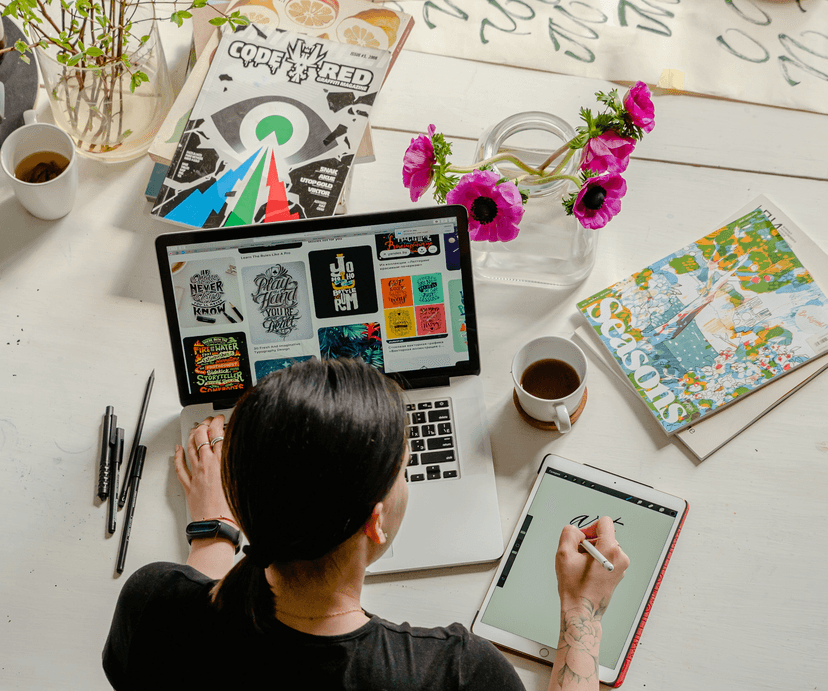In the modern world of digital communication, you might wonder about the relevance of tangible items like business cards. However, despite the digital revolution, arts business cards still hold a significant place in the art industry. They serve as a physical reminder of you and your work, making them an indispensable marketing tool.
Arts business cards are not just about contact information. They are a visual representation of your artistic persona and the first impression you leave with someone. A well-designed card is an opportunity to showcase your creativity and make a strong impact. It provides a sense of legitimacy, professionalism, and dedication to your craft.
Moreover, arts business cards are a part of your branding. They reflect your artistic style and personal brand, helping you stand out from the crowd. When designed correctly, they have the power to intrigue, inspire, and leave a lasting impression long after your initial meeting.
How Can Arts Business Cards Maximise Your Creative Impact?
Arts business cards can significantly maximise your creative impact by serving as a mini-portfolio. They give a glimpse into your artistic abilities and style, prompting potential clients or collaborators to explore your work further. By incorporating elements of your art into your business card design, you can create a compelling narrative about you and your work.
Your business card is your chance to make a memorable impression. The design, colours, typography, and even the card's texture can speak volumes about your creative approach. A well-thought-out card can evoke emotions, provoke thought, and engage the recipient in a way that a digital interaction may not.
Moreover, arts business cards can provide a tangible connection between you and your audience. In an increasingly digital world, a physical item like a business card can have a significant impact. It serves as a constant reminder of your brand and your work, creating a lasting impression.
The Role of Creativity in Designing Arts Business Cards
Creativity plays a crucial role in designing arts business cards. Unlike traditional business cards, arts business cards are an opportunity to express your artistic style and creativity. They are more than just a tool to share contact information; they are a canvas to showcase your artistic identity.
The design of your business card should reflect your unique artistic style. It could be minimalist, abstract, vibrant, or whimsical, depending on your art form and personal aesthetic. Every element, from the colour palette to the typography, should be carefully considered to ensure it aligns with your brand.
Creativity in designing arts business cards also extends to the choice of materials and finishes. You can experiment with different card stocks, textures, and finishes to make your card stand out. For instance, you could use a linen card stock for a tactile experience or a glossy finish for a sleek, modern look.
Essentials of a Well-Designed Arts Business Card
A well-designed arts business card can be a powerful tool to promote your work and brand. However, it's essential to strike a balance between creativity and functionality. Here are some key elements to consider:
Firstly, your business card should include essential information such as your name, contact details, and website or social media handles. It's important to ensure this information is clear and easily readable.
Secondly, your business card should reflect your brand. This includes your artistic style, colour palette, and typography. It should give the recipient a sense of your work and aesthetic.
Lastly, quality is crucial. A well-crafted, high-quality business card not only looks professional but also conveys a sense of respect for your work and brand. Consider investing in good quality card stock and printing to make your card feel as good as it looks.
Tips for Creating Unique and Impactful Arts Business Cards
Creating unique and impactful arts business cards requires thoughtful consideration and creativity. Here are some tips to help you design a business card that stands out:
Consider your brand: Your business card should reflect your brand's identity. Think about your artistic style and how you can translate that into your card's design.
Pay attention to details: Small details can make a big difference. Consider aspects like the card's shape, texture, and finish. These elements can add a touch of uniqueness to your card and make it memorable.
Use high-quality images: If you're including images of your work, ensure they are high-quality. Blurry or pixelated images can detract from your card's overall appearance and impact.
Keep it simple: While it's important to showcase your creativity, try not to overcrowd your card. Keep the design clean and the information clear and concise.
Experiment with materials: Don't be afraid to experiment with different materials. Using unconventional materials like wood, metal, or even fabric can make your card stand out and leave a lasting impression.
Making the Most Out of Your Arts Business Cards
Once you've designed your arts business cards, the next step is to make the most out of them. Here are some tips:
Carry them with you: Always have a stack of business cards with you, whether you're attending an art fair, networking event, or even a social gathering. You never know when you might meet a potential client or collaborator.
Offer your card: Don't wait for someone to ask for your card. If the conversation is relevant, offer your card to the person you're speaking with.
Use them as a promotional tool: You can use your business cards as a promotional tool. Include them in your art packages, hand them out at exhibitions, or use them as tags for your artwork.
Keep them updated: Ensure your business cards are always up-to-date. If your contact information, website, or social media handles change, make sure to update your business cards.
Case Studies: Successful Arts Business Cards
There have been many successful examples of artists using business cards to make a lasting impression and promote their work. For instance, visual artist Jessica Hische's business cards reflect her intricate lettering work and unique style. The cards are laser-cut with her signature typography and include a small illustration, making them a mini piece of art.
Another example is graphic designer Mike Kus, who uses his business cards as a mini-portfolio. His cards feature images of his work on one side and his contact details on the other, giving recipients a glimpse of his style and capabilities.
These examples show the power of arts business cards in promoting an artist's work and brand. They prove that with a bit of creativity and thoughtfulness, business cards can be a powerful tool in your marketing arsenal.
Mistakes to Avoid When Designing Arts Business Cards
While designing arts business cards can be a fun and creative process, there are some common mistakes to avoid:
Overcrowding your card: While you may be tempted to include as much information as possible, overcrowding your card can make it look cluttered and difficult to read.
Choosing the wrong font: Make sure your font is readable and aligns with your brand. Avoid using too many different fonts, as it can make your card look messy.
Not proofreading: This may seem obvious, but always proofread your card before printing. A typo or incorrect contact information can make you look unprofessional.
Ignoring the back of the card: The back of your card is valuable real estate. Use it to showcase more of your work, include a quote, or add any additional information.
Conclusion: Your Arts Business Cards as a Reflection of Your Creative Identity
In conclusion, arts business cards are more than just a means of sharing contact information. They are a reflection of your creative identity and an essential tool for promoting your work and brand. A well-designed business card can leave a lasting impression, evoke emotions, and create a tangible connection between you and your audience.
So whether you're a seasoned artist or just starting out, consider investing in arts business cards. They could be the key to maximising your creative impact and taking your art career to the next level. Remember, your business card is a small canvas that holds the potential to showcase your creativity and make a strong impact. So, go ahead, unleash your creativity and design a business card that truly represents you and your art!



